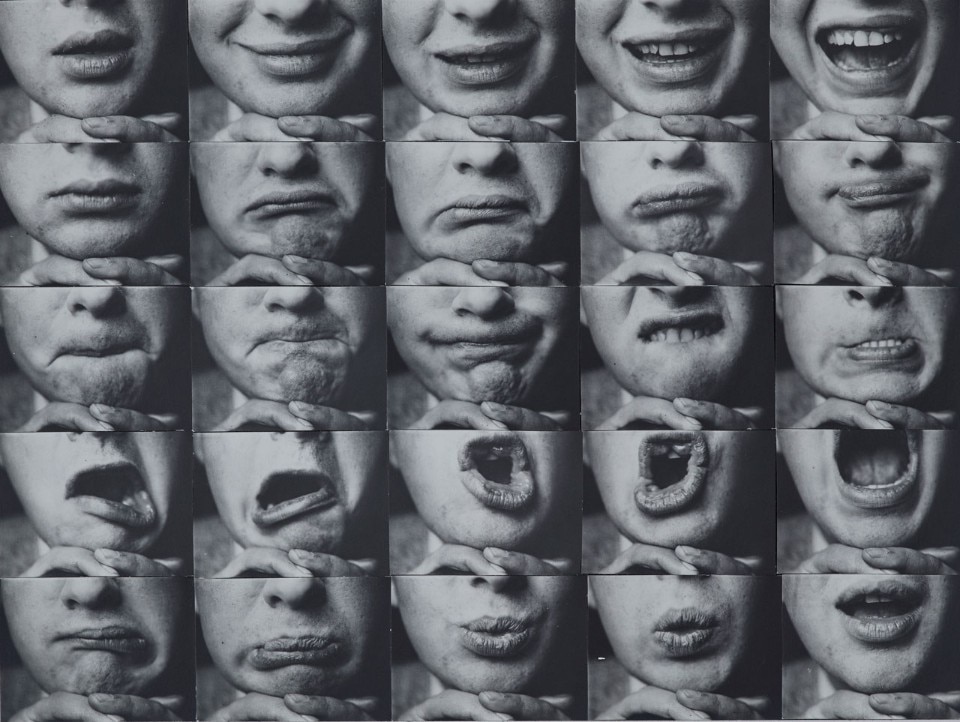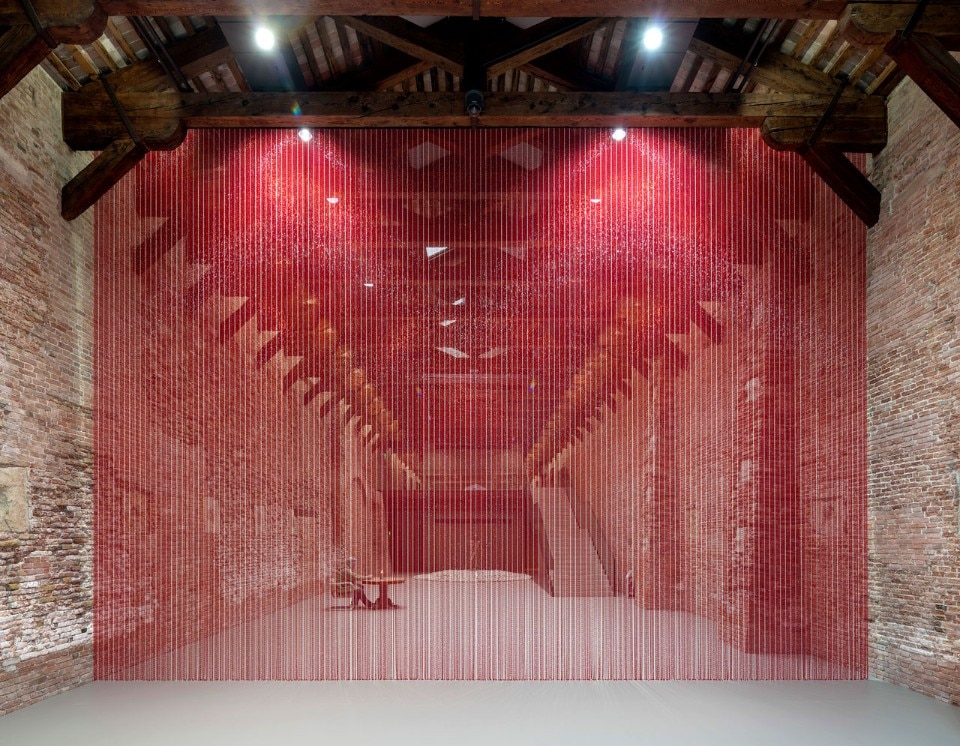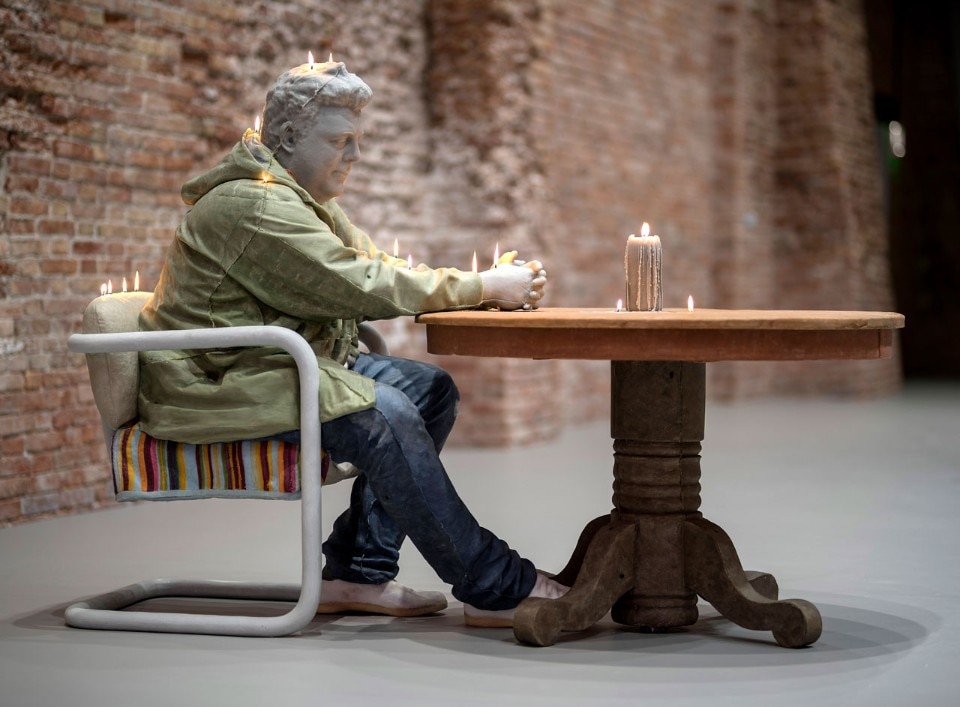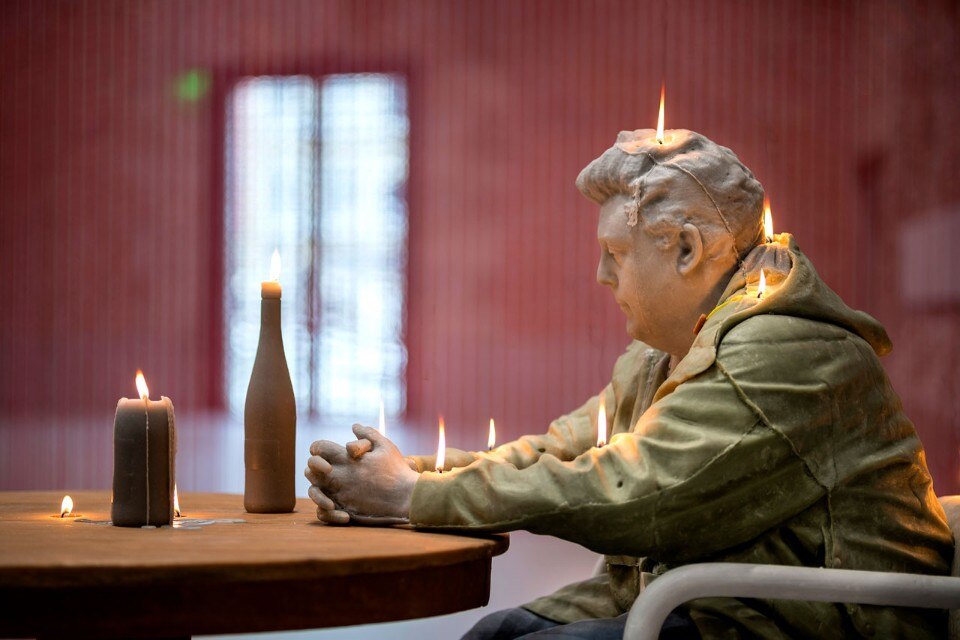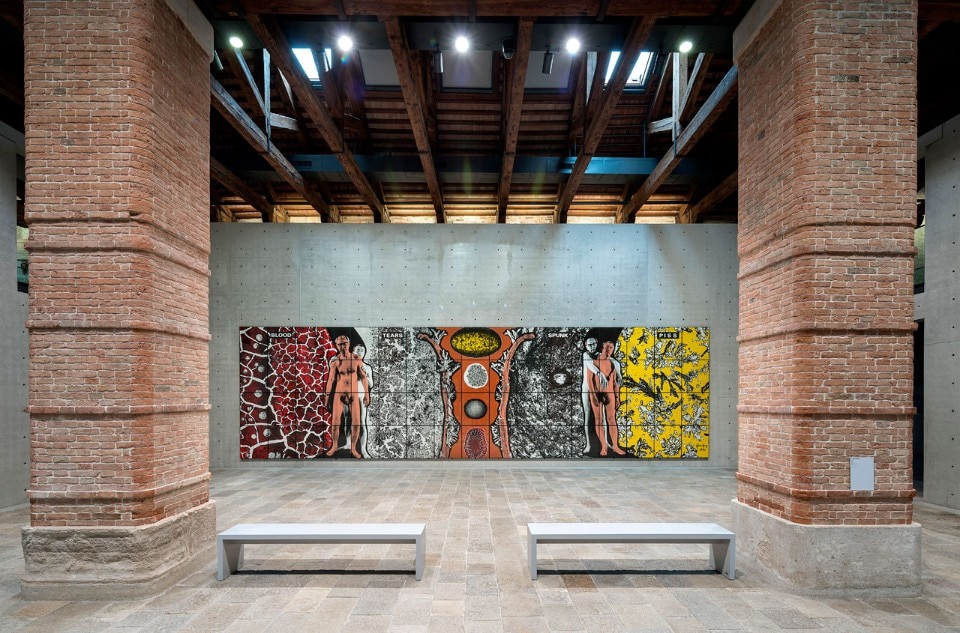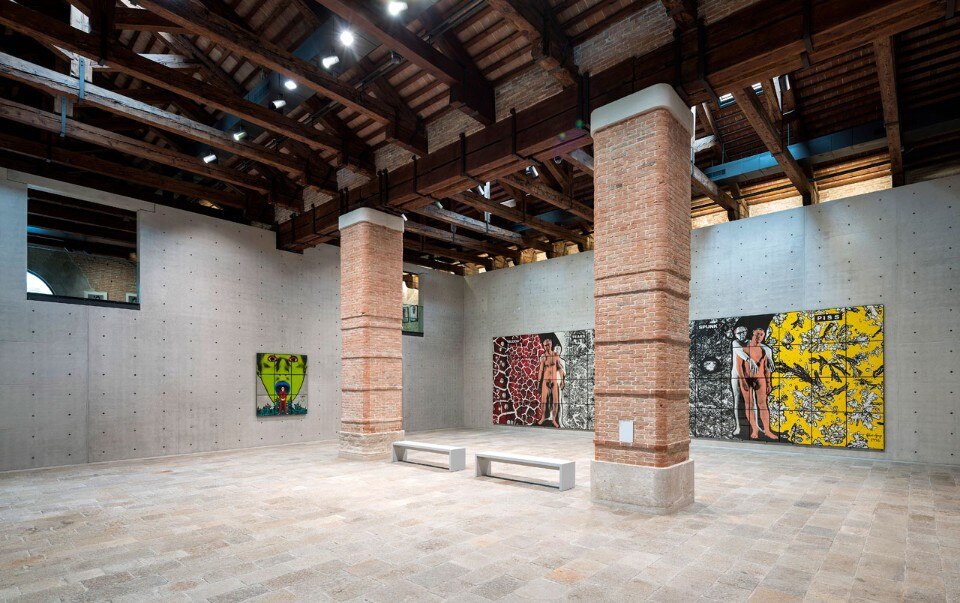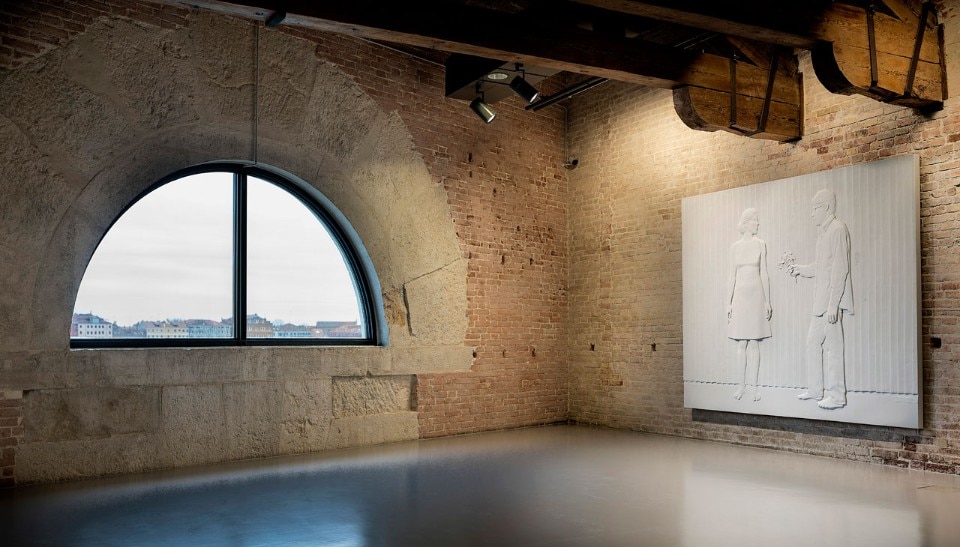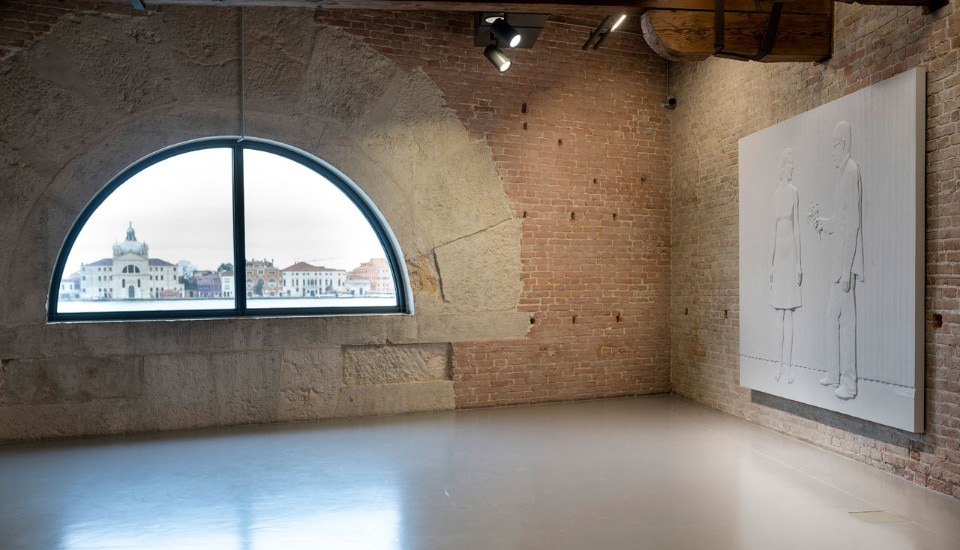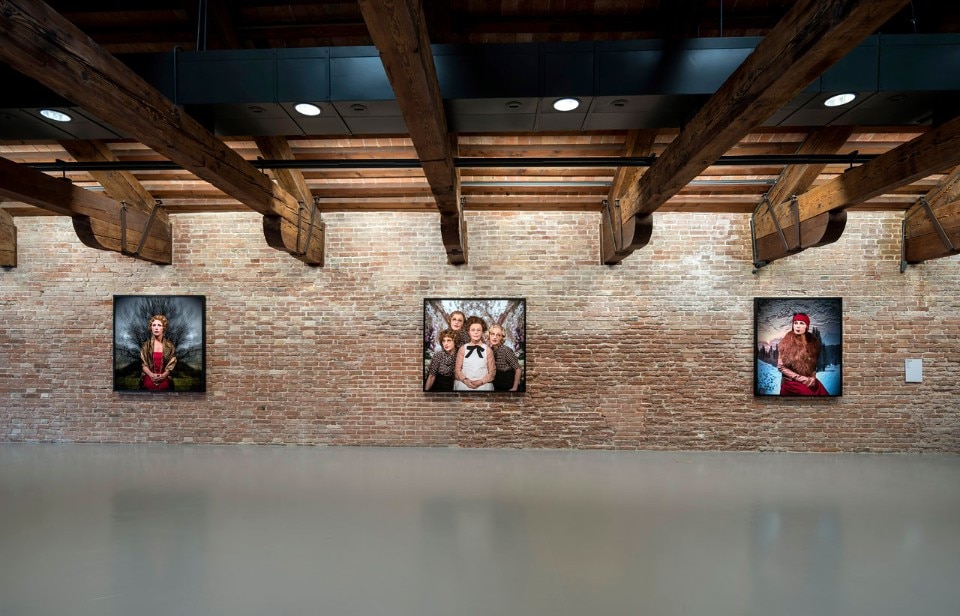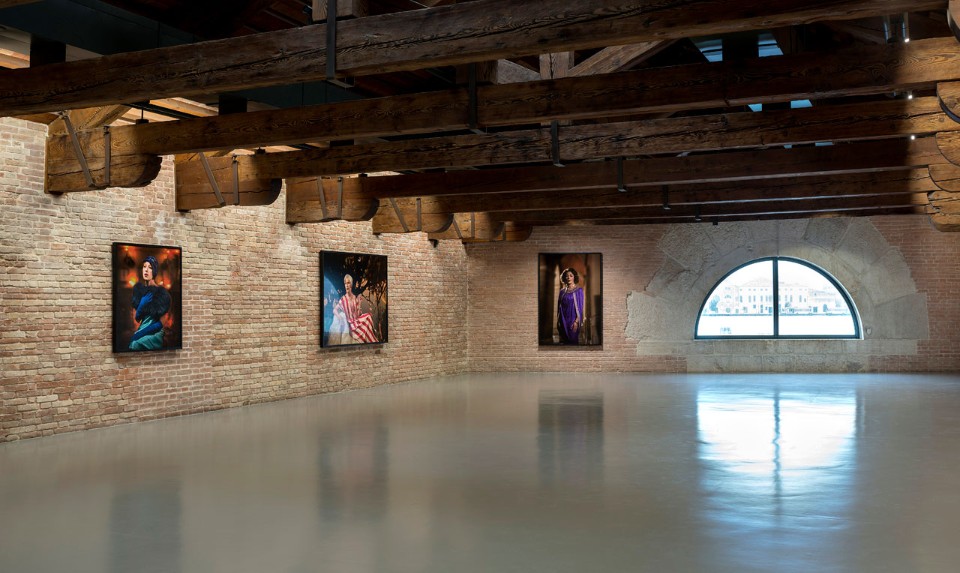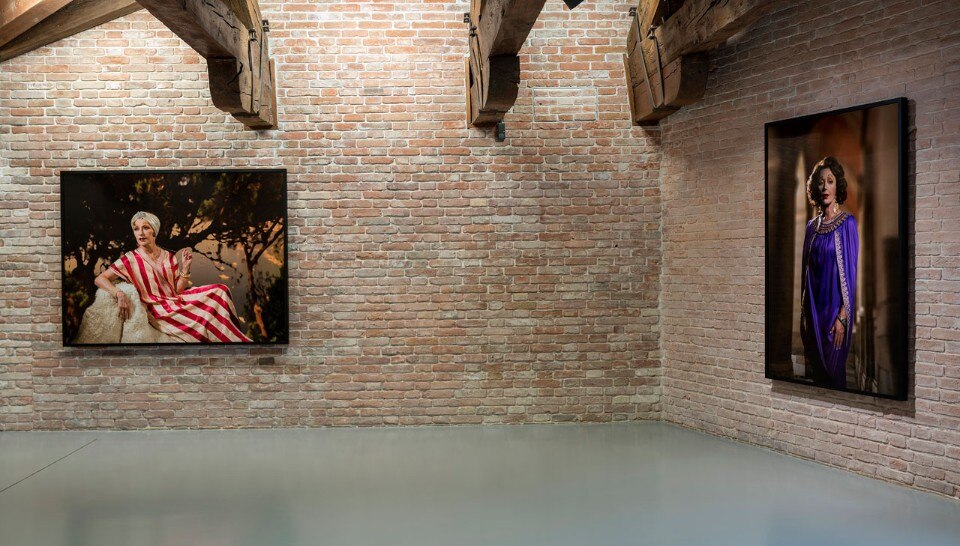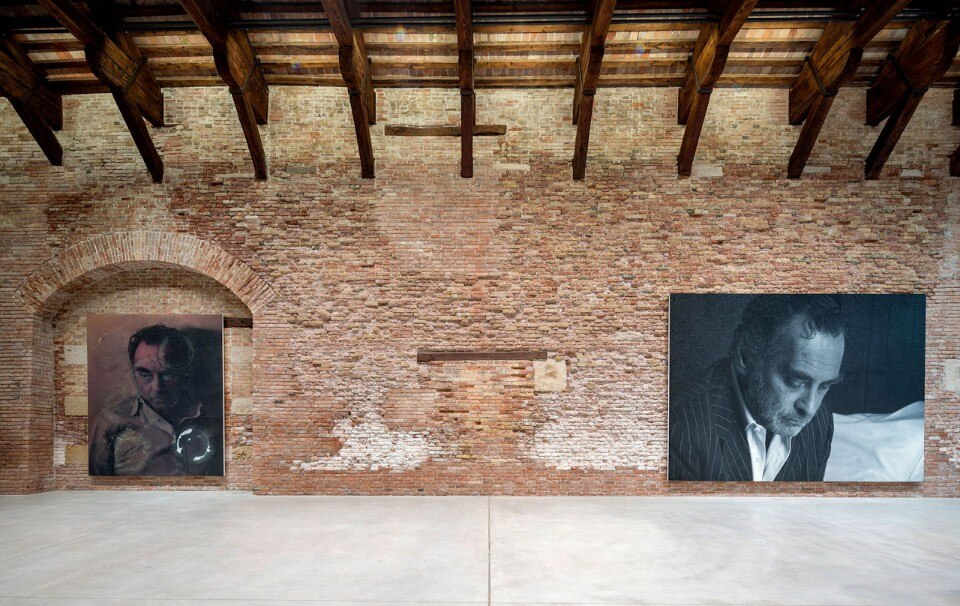No work better sums up the broad-ranging topic of the new “Dancing With Myself” exhibition – curated by Martin Béthenod and Florian Ebner and born out of a partnership with the Folkwang Museum in Essen – than the Live Through That (Atelier Brancusi) video by French artist Lili Reynaud-Dewar. In it, the young artist’s body is shown as if it were a sculpture in the Atelier Brancusi in Paris. Everything is there: a reflection on the artist’s role, painting that becomes body painting, the appropriation of an exhibition space and a confrontation with the history of art as a mirror; plus, an awareness of being part of a visual and cultural tradition that runs through the work of all the artists, which visitors can admire in the large Punta della Dogana spaces.
The self-portrait genre and the space it occupies in an artist’s life has always been central to the production of all artists who set out to explore identity and the questions surrounding the ways it is expressed with images, forms and gestures. In this sense and in clearly divided areas and rooms, “Dancing With Myself” goes back over individual manifestations by great artists who have followed this path. There is an unambiguous curatorial choice not to proceed by comparison or to pinpoint sub-themes by juxtaposing artists. Rather, it is a progression of biographies, presenting every artist “in the mirror”, with their reflections and transfigurations.
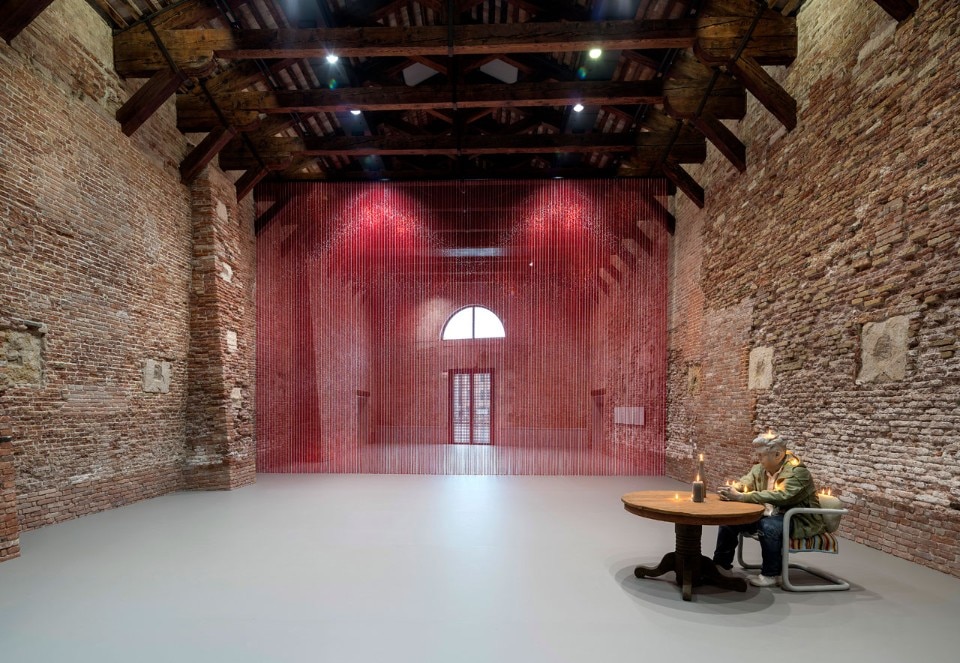
The start of the exhibition (almost unnoticed by distracted visitors) is also the most moving and intense moment of the entire route as it begins with the celebrated Felix Gonzalez-Torres work Untitled (Blood); in 1992, he staged the transubstantiation lay of his AIDS-afflicted body, the illness that was to cause the Cuban artist’s death in 1996. After walking through the shower of red plastic beads forming the large curtain, “Dancing With Myself” opens with an expanse of more purely retinal works featuring an alternation of all the different expressive registers and the techniques that make photography the preferred medium for self-discovery. If we imagined this exhibition as a family tree, we would see the family portraits of more than a century of visual culture hanging on the branches and, at its roots, we would find extraordinary artists such as Lucy Renée Mathilde Schwob. She chose the pseudonym Claude Cahun and became one of the most eccentric and pioneering artists between the two World Wars, strongly questioning personal identity decades before gender fluidity and the obsolescence of sexual stereotypes. Cahun’s parentage is clear in other Masters such as Switzerland’s Urs Lüthi and artworld superstars such as Cindy Sherman, who manifested the theme of identity appropriation in her 1970s’ works, already revealing the overlapping of imageries (cinematographic, social, aesthetic) in every individual of the post-consumer society.
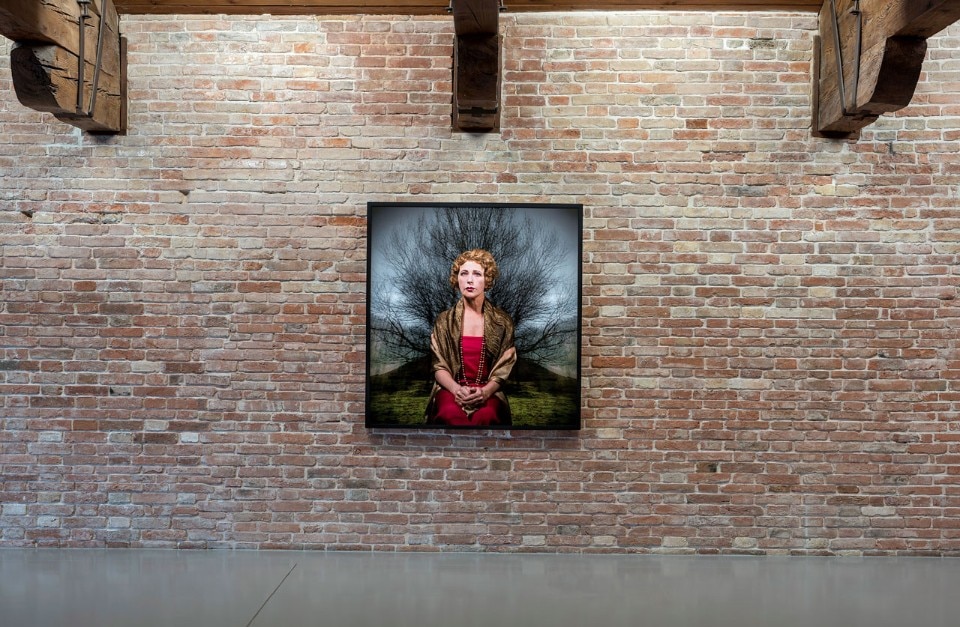
This family album – which continues ideally with Nan Goldin, Lee Friedlander and younger artists such as LaToya Ruby Frazier – sees the story of a face or a belonging to social and ethnic groups in the somatic traits but it also opens up another, equally trenchant, strand that innervates the whole history of art, starting from the conceptual experiences and performance arts: the body as a means of measurement and a medium. From Bruce Nauman to John Coplans, from Arnulf Rainer to Italians Boetti and Paoli, the radical nature of the 1960s’ experimentation called for direct involvement, a non-narcissistic approach to self-portrayal, to describe the artist’s scope as a witness to a specific moment and a re-found centrality not unlike Leonardo Da Vinci’s Vitruvian Man.
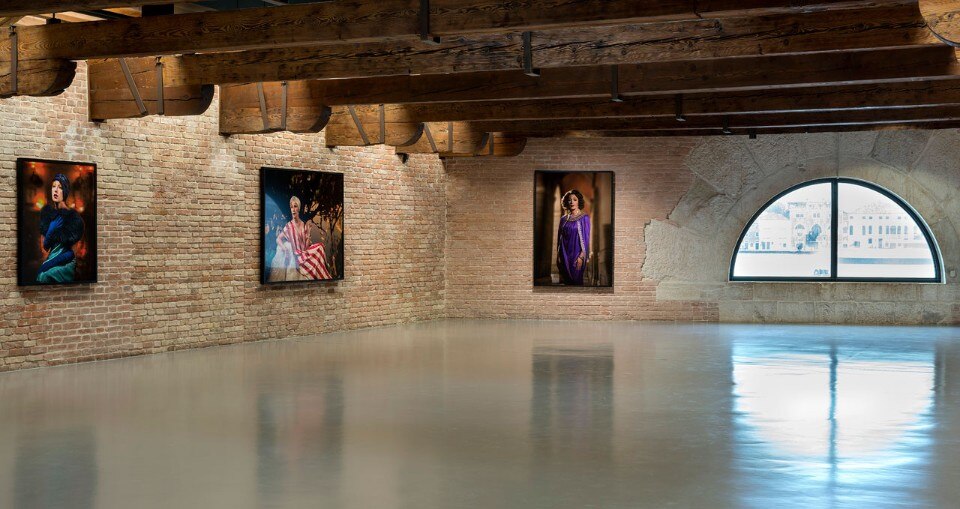
Works such as Maurizio Cattelan’s Noi (2010) then bring in the topic of the double, just as the many works exhibited by the duo Gilbert & George prompt a reflection on the portrait in a couple relationship and one identity confused with another. Damien Hirst previously filled the spaces of the Pinault Collection with his titanic “Treasures from the Wreck of the Unbelievable” but he appears here in the guise of the enfant terrible of Young British Art. He challenged the terror of death in the macabre early-selfie With Dead Head (1991) and a flabby divinity portrayed in one of the many “fake” archaeological finds among the famous wrecks of his great undertaking: Bust of the Collector (2016).
“Dancing With Myself” offers much, perhaps too much, food for thought. It is, therefore, a good idea to carefully study all the artists’ biographies, excellently documented in the exhibition catalogue, to better approach each work and its historical significance because it is, indeed, in time and its sedimentation that the identity of a face and its story are best expressed and understood, just as Roni Horn magnificently revealed in her a.k.a. (2008-2009), one of the true masterpieces on show.
- Exhibition title:
- Dancing With Myself
- Opening dates:
- 8 April – 16 December 2018
- Venue:
- Palazzo Grassi – Punta della Dogana, Venice
- Curators:
- Martin Bethenod, Florian Ebner


